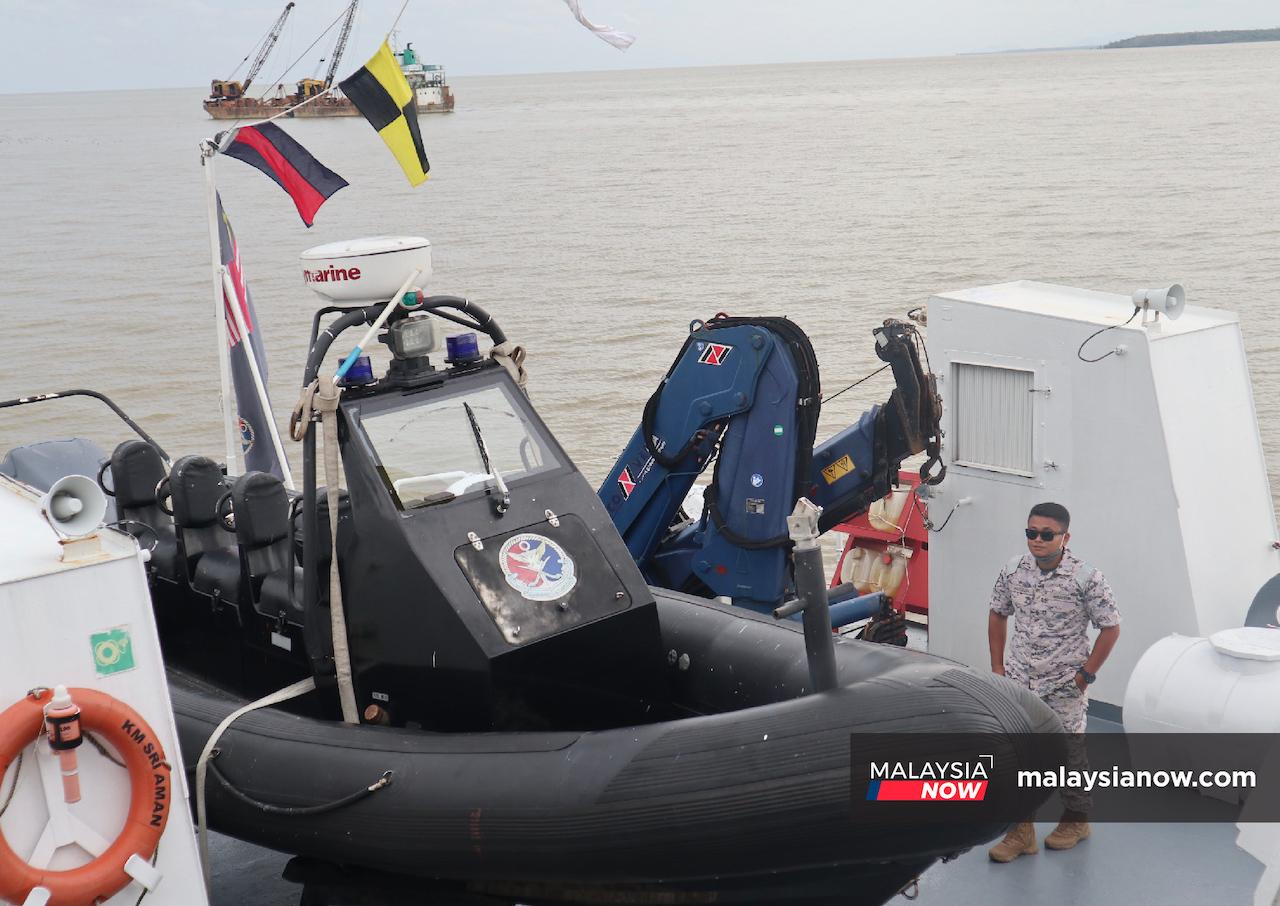‘The law of the sea’: time for Malaysia to boost maritime defences?
While the coast guard is still capable of meeting the majority of challenges on the open sea, the time may come when Malaysia should consider beefing up its defence assets.
Just In
For 13 years, coast guard Salim Bujang has lived by the law of the sea.
His work is risky and demanding, and sees him spending weeks at a time on the ocean waves.
Salim is the chief engineer onboard the Sri Aman patrol ship, responsible for overseeing all operations while safeguarding Malaysia’s territorial waters as part of the Malaysian Maritime Enforcement Agency.
Every morning, he checks the ship’s engine and system, making sure that everything is working as it should be.
When the weather is good, he can normally be found on the ship’s bridge where he monitors the activities being conducted along the coastal lanes.
This includes monitoring environmental pollution and keeping an eye out for illegal activities such as smuggling, piracy and trafficking, as well as participating in search and rescue and humanitarian and disaster relief operations.

Malaysia’s coast guard plays an important role in maritime security, operating on small boats and craft for inshore and coastal surveillance, as well as interdiction duties.
Each patrol craft is equipped with an unmanned aerial vehicle capable of travelling 800km, a 300mm Aselsan SMASH gun and two MTU 12V4000 M73 diesel engines.
With the vessels’ medium-range weapons and ability to reach speeds of up to 12 knots for about 2,000 nautical miles, the coast guard has spent years protecting Sarawak’s maritime territory from encroachment and criminal activity.
Salim said the mid-range weapons on each offshore patrol vessel made them capable of confronting “considerable” threats such as illegal fishing and smuggling activities.
He said it would even be possible for the coast guard to confront Chinese vessels although Chinese coast guard ships are “much larger”.
The Sri Aman patrol ship on which he serves was procured in 2017 following an increase in the number of such vessels entering Malaysia’s waters in the South China Sea near Sarawak.

But Salim believes that growing geopolitical disputes will require Malaysia to obtain more advanced technology for its maritime defence, especially to address the problem of militants and armed groups entering Sabah by sea.
The Nusantara effect
Further south, neighbouring Indonesia has been beefing up its air defence. Indonesia, one of several Asian countries that expressed concern about the Aukus pact inked by Australia, the US and the UK, last week acquired six Rafale fighter jets from France as part of a larger order of 42 planes.
Its air force modernisation is also part of Indonesia’s plan to secure its borders, including at the new capital city of Nusantara in East Kalimantan.
Regional security analysts who spoke to MalaysiaNow said Sabah and Sarawak should consider emulating the move, given their shared land boundaries with Indonesia.
Counter-terrorism expert Ahmad El-Muhammad said Indonesia’s move to acquire new assets was an indication of the changing nature of regional geopolitics, citing what he described as China’s “flexing-the-muscles approach” in Southeast Asia.

Referring to China’s recent intrusion into Malaysia’s airspace, he said Indonesia had taken a “proactive approach” to strengthen its defence system.
“It is possible for Malaysia to do the same,” he said, adding however that the country was still capable of facing emerging challenges.
“The 2021 defence budget increased 1.8% from the previous year to about US$3.84 billion,” he said.
“This indicates that Malaysia is well prepared to face such challenges.”
Lai Yew Meng, a regional security analyst at Universiti Malaysia Sabah, agreed, saying Indonesia’s acquisition of the Rafale fighter jets had been widely anticipated.
Speaking to MalaysiaNow, he described it as a “quest” by Indonesia to strengthen its national defences and secure its borders amid the geopolitical uncertainties caused by escalating US-China tensions in the South China Sea.
“Malaysia had a similar air force modernisation plan where the proposed acquisition of such fighters had been deliberated since the last decade,” he said, referring to the defence white paper laid out in 2019.
Lai said some delay could be expected given the challenges over the past two years. However, he said the growing tensions of late would make it all the more urgent for the planned reforms to materialise.
“The modernisation of the national armed forces of any Asean state could also contribute to enhancing the collective defence of Asean,” he added.
Subscribe to our newsletter
To be updated with all the latest news and analyses daily.
Most Read
No articles found.
